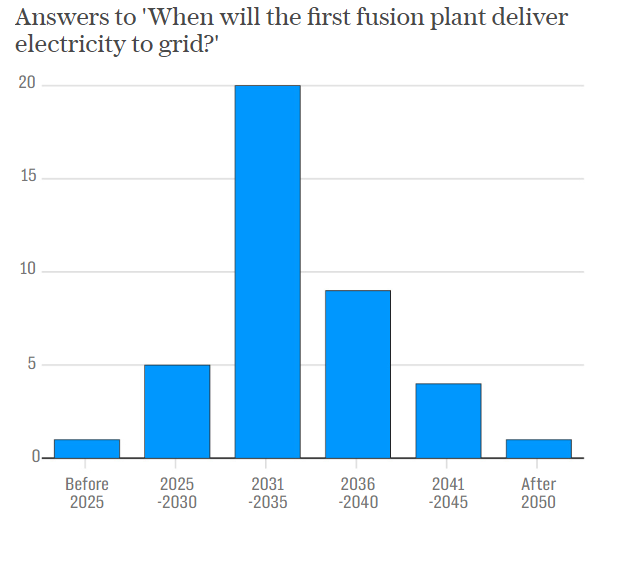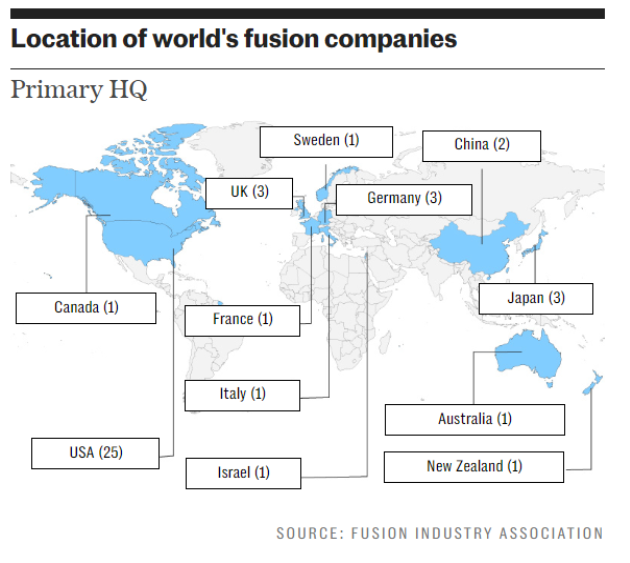Nuclear fusion may be much closer than it seems

Commercial nuclear fusion has gone from science fiction to scientific reality in less than a decade, but that's not clear to everyone. Even well-informed members of the Western political class are mostly unaware of the quantum leap in superconductors, lasers and advanced materials that is suddenly changing the economics of fusion energy .
Britain's First Light Fusion announced last week that it had broken the world pressure record at Sandia National Laboratories in the United States, pushing the limit to 1.85 terapascals, five times the pressure in the Earth's core.
Days earlier, a series of peer-reviewed publications confirmed that Commonwealth Fusion Systems, near Boston, broke the world record for a large-scale magnet with a field strength of 20 tesla, using the latest superconducting technology at high temperature. This exceeds the threshold needed to produce net energy, or a 'Q factor', of greater than 1.0.
“Overnight, it basically changed the cost per watt of a fusion reactor by a factor of almost 40,” said Professor Dennis Whyte, dean of plasma at the Massachusetts Institute of Technology (MIT). The March edition of the journal IEEE Transactions on Applied Superconductivity published six articles validating different aspects of the technology.
Magnets are used to fuse hydrogen isotopes by compressing super-hot plasma inside a tokamak device. The temperature must be ten times hotter than the sun's surface to replicate solar fusion, because the Earth's magnetic field is much weaker.
“Old” low-temperature magnets are made of niobium alloys that work near absolute zero, at -270C. The new magnets raise the temperature from 4 kelvins to 20 kelvins using rare earth barium copper oxide (ReBCO) in a radically new design. They combine superconductivity with extreme magnetic power. This achieves a “multiple order of magnitude increase” in fusion capacity. This is a very new technology, completely non-existent just 10 years ago and unexplored five years ago, but now present.
Fusion insiders are way ahead of the public's responses to 'When will the first fusion plant deliver electricity to the grid?'
It's time to abandon the old joke that the merger is 30 years away and always will be. A poll conducted at the International Atomic Energy Agency forum in London found that 65 percent of industry experts think fusion will generate electricity for the grid at affordable costs by 2035, and 90 percent by 2040.
The Washington-based Fusion Industry Association says four of its members think they can do it by 2030. If the industry is close to being right, we need to rethink all our energy assumptions. Britain's planned gas plants are rendered obsolete almost before they are built.
In late December, China launched its own fusion consortium , combining its top universities and state-owned industries into an Apollo-style national enterprise. “Controlled nuclear fusion is the only direction for future energy,” the State Council said. This is the new front in the technological arms race.
Iter: the useless European bald. The initiative passes to private individuals
The $20 billion ITER global research project, a consortium of the United States, Japan, Europe, China and Russia, increasingly looks like a beached whale in this competition. It has collected valuable science over the decades, but has been hampered by geopolitics and delays, and has never produced more energy than it put in, unlike the Lawrence Livermore Laboratory in the US, which uses rival inertial fusion technology.
The baton was quickly passed to tech moguls. Commonwealth Fusion, a spin-off of MIT's Center for Plasma and Fusion Science, is backed by Bill Gates, Jeff Bezos and Sir Richard Branson. It aims to produce its first plasma next year and achieve a constant Q-factor of 10 by the end of 2020, the energy target for commercial take-off.
More convenient and stable energy in the long term
Dr. Mumgaard said Commonwealth expects costs of $60-80 MWh with scale, lower than the 24/7 cost of intermittent renewables paired with gas peaker plants or energy storage in most locations. “It could be even lower. We don't use uranium. There is no risk of a meltdown,” he said.
Regulators in the UK and US plan to treat fusion plants like hospitals, as they use small amounts of deuterium-tritium. The radioactive release is not comparable to that of a uranium fission reactor. This means they can be built almost anywhere and launched quickly.
Britain is thriving on all fronts, a legacy of the ITER Joint European Torus project at Culham, but also a feat of leadership. “Of all the countries in the world, the United Kingdom is most aggressively pursuing fusion energy,” said American scientists Matthew Moynihan and Alfred Bortz, co-authors of Fusion's Promise.
Location of the world's fusion companies Headquarters. In the EU, Germany is the leader, but there are also initiatives in France, Sweden and Italy.
The allure of fusion is now well understood. It generates four million times more energy than fossil energy, without emitting CO2 or methane. It creates almost no long-term waste. Its main by-product is inert helium.
It uses almost no soil and little water and can be made virtually invisible. Unlike today's fission, it produces high-level industrial heat to help decarbonize glass, concrete, steel, ammonia, hydrogen, etc. It runs continuously if you need it, or is dispatchable if you don't.
The fuel is effectively unlimited for thousands of years and can be obtained anywhere: deuterium from seawater and tritium from breeding with small amounts of lithium. There is no risk of an unexpected chain reaction. It uses no fissile materials and is useless for weapons.
A small Italian note
We have allocated theoretical hundreds of thousands of euros to the PNRR; often in projects of dubious quality, including trump clubs, river straightening and cycle paths. Instead of distributing money almost everywhere, wouldn't it have been better to concentrate it on a few initiatives on nuclear fusion?
Lev Artsimovich, the Polish-Russian father of the tokomak, was once asked when fusion would come of age. “When humanity really needs it,” he replied. And so it is proving to be.

Thanks to our Telegram channel you can stay updated on the publication of new Economic Scenarios articles.
The article Nuclear fusion could be much closer than it seems comes from Economic Scenarios .
This is a machine translation of a post published on Scenari Economici at the URL https://scenarieconomici.it/la-fusione-nucleare-potrebbe-essere-molto-piu-vicina-di-quanto-sembri/ on Thu, 14 Mar 2024 12:00:02 +0000.


